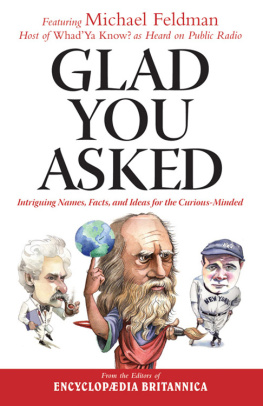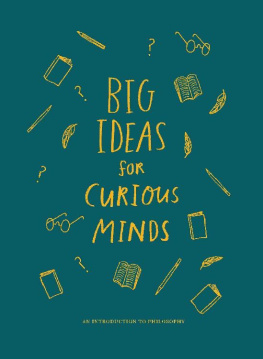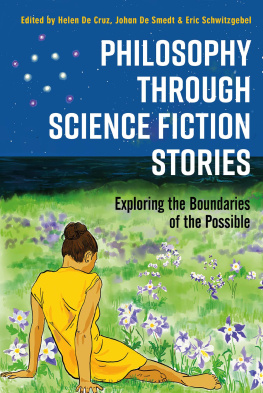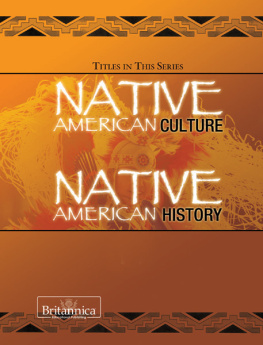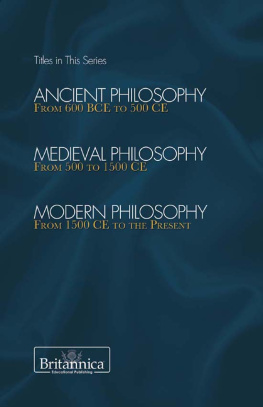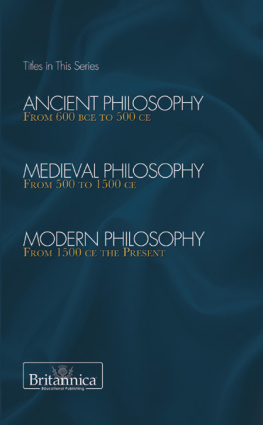Encyclopaedia Britannicas Thoughts On Introduction
W hich brilliant mathematician broke enemy codes during World War II, laid the foundation for artificial intelligence, underwent 12 months of hormone therapy, and then was found dead in his bed, poisoned by cyanide? Which bank relies on peer pressure as collateral for loans? Which fitness champion walked barefoot to work carrying a 40-pound bag of sand and preached the virtues of nudity and sleeping on the floor? And the monks of which world religion cover their mouths with cloth to prevent them from ingesting insects and violating their belief in nonviolence? Stay tuned for the answers...
Encyclopdia Britannica is one of the most trusted sources of information around the globe. Its 44-million-word encyclopdia is often cited as the most authoritative reference work in the world, and its legendary print set, first published in three volumes beginning in 1768, is the oldest continuously published and revised work in the English language. And so it is with great pleasure that we offer today, in conjunction with Triumph Books and Michael Feldman, acclaimed radio host of WhadYa Know? , a fun and novel way to access Britannicas wealth of information.
The entries in Glad You Asked are a select few of the more than 28,000 articles found in the one-volume Britannica Concise Encyclopedia . Many of the entries are on subjects that we all should know; other entries are on subjects we might just want to know because theyre simply too intriguing and entertaining to pass up. The entries are divided into six categories art, culture, and pastimes; history; religion, philosophy, and ideas; science, technology, and life; the world and its wonders; and trailblazersand each section contains a wide range of topics and article types, from biographies to specific subject-based entries.
Also, introducing each section is a short essay by Michael Feldman, whos also contributed the sidebars and quizzes sprinkled throughout this volume. His riffs on the various subjects covered in this book are all written in Michaels inimitable style, which has made his comedy-quiz show one of the most popular programs on American radio.
So we hope you enjoy this novel addition to Britannicas family of reference works. And for those of you curious about the answers to the questions posed earlier, we suggest you turn to pages 147, 161, 198, and 100. More information is also available, on these particular subjects and thousands of others, at www.britannica.com, where authoritative answers are always just a click away.
Theodore Pappas
Executive Editor
Encyclopdia Britannica, Inc.
Feldmans Thoughts On... Introduction
Silly Putty, dynamite, polyethylene, and Post-It notes are but a few of the things discovered serendipitously; I discovered that fact while looking for something else entirely. Serendipity comes from Horace Walpoles telling of the Persian fairy tale The Three Princes of Serendip (Sri Lanka, really, but try saying Sri-lankaty). The princes found a lame, blind-in-one-eye, toothless camel with a pregnant maiden atop that no one else, somehow, noticed, and received great unexpected riches. My experience is that while looking for answers to certain questions, I always discover other answers:
The first bath was probably taken around 2500 bc at Mohenjo-Daro in the Indus Valley, the cradle of bathing, but it was the Romans who made the world safe for bathing by conquering it and making it take a bathfirst in the tepidarium (lukewarm), next in the calidarium (hot), and finishing off in the frigidarium (cold).
There apparently are two types of people in the world, although some debate as to which two: Hippocrates saw the phthisic (tall, thin, tubercular) and the apoplectic (short, fat, stroke-prone); Coleridge believed you were born either an Aristotelian or a Platonist, depending on whether you were an insie or an outsie; and Nietzsche considered men either Apollonian conservatives or Nietzschean rebels. Not much doubt where he fell.
If there are no panaceas, its not because people havent tried: bezoars, fossilized stones of animal dung, were once widely praised and prized as magical cure-alls, or as Samuel Johnson noted, the bezoar stones of the wild pazan goat were especially good for gout, rickets, hysteria, diabetes, varicose veins, smallpox, dilated stomach, afflictions of the spleen, and malposition of the pelvic organs.
Thanks to the wonderful resources of Encyclopdia Britannica, theres plenty more where this information came from.
Michael Feldman
Feldmans Thoughts On... Art, Culture, and Pastimes
A rt is something you know when you see it, but culture tells you which reproduction to hang over the couch. Does the house cry out for a piece from the Ashcan school, the talented if somewhat morose city-life realists who worked after the turn of the last century and whose ranks included Edward Hopper? In the master bedroom, with its Mediterranean bedstead, wouldnt Diego Velzquez be in order, perhaps Los Borrachos (The Feast of Bacchus), or The Supper at Emmaus by Caravaggio if you want to tone things down a bit? Id avoid the royal portraits unless you have an unusually large foyer. Kandinsky pretty much goes with any dcor, but Picassos Blue Period in the powder room has been done to death. And dont even think about a Calder unless you own the air space.
Although culture started as an opportunity for the wealthy to prove that money cant buy taste, the franchise has been extended now that pop culture has its own department; maybe Keith Haring and Michelangelo had more in common than meets the eye (Haring did not design siege weapons on the side). I think that we all can agree that manga (Japanese for comics and/or cartoons) and illustrated manuscripts were cut from the same cloth. The good thing about popular culture is that theres little to read. The bad thing about it is that its popular and, therefore, inescapable.
Aesthetics. There, Ive said it, and Im glad. Keats wrote, Beauty is truth, truth beauty, so well find little guidance there, but taste is something you can work at. Start with the curtains and dont stop there. Take an adult education coursemaybe theyll have nude models. Visit a museum other than one that preserves Indiana high school basketball jerseys or Studebakers (although the one in South Bend is not to be missed the next time youre there to cheer on the Irishhey, its all culture). Find a gallery, pick a period you feel comfortable withfor me it would have to be the Expressionists, Otto Mller in particular because I feel like his subjects lookand immerse yourself. Start to dress like a character in early Nabokov (maybe not Humbert Humbert) after first reading all of Nabokov, including his essays, and get back to me. You might want to follow the example of my parents-in-law and join a Great Books sect in Sterling, Illinois, although if its just a lot of Michener you could be wasting your time. Vow to learn Greek so that you can read the original Euripides, all the while remembering Chicos You-rip-a-dese, you pay! Make your next movie one with subtitles, but dont read them aloud. Opera is not out of the question, although probably not the Ring Cycle right off of the bat. But dont go to the opera if youre going to sit there the whole time wondering, All right already, wheres the fat lady? Try The Merry Widow it might be as instructive as the following entries on Art, Culture, and Pastimes.
Achebe, Chinua
Achebe, (Albert) Chinua (lumogu) (born Nov. 16, 1930, Ogidi, Nigeria) Nigerian Igbo novelist. Concerned with emergent Africa at its moments of crisis, he is acclaimed for depictions of the disorientation accompanying the imposition of Western customs and values on traditional African society. Things Fall Apart (1958) and Arrow of God (1964) portray traditional Igbo life as it clashes with colonialism. No Longer at Ease (1960), A Man of the People (1966), and Anthills of the Savannah (1988) deal with corruption and other aspects of postcolonial African life. Home and Exile (2000) is in part autobiographical, in part a defense of Africa against Western distortions.
Next page
